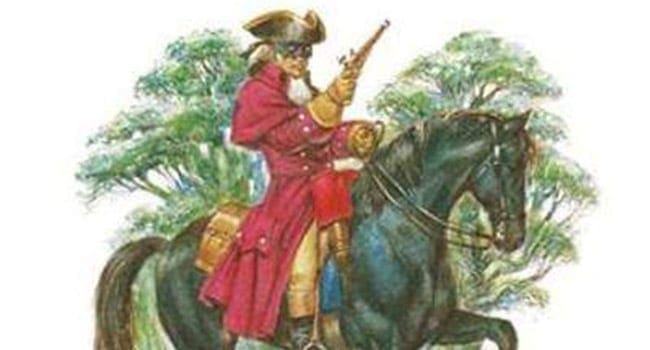 If memory serves, my first encounter with the concept of a highwayman came circa 1952 thanks to the weekly Sun comic book. One of its regular characters was Dick Turpin, a highwayman who embarked on a series of adventures with his female sidekick Moll Moonlight.
If memory serves, my first encounter with the concept of a highwayman came circa 1952 thanks to the weekly Sun comic book. One of its regular characters was Dick Turpin, a highwayman who embarked on a series of adventures with his female sidekick Moll Moonlight.
In addition to robbing the rich to help the poor, Dick and Moll tangled with an assortment of nefarious villains, one of whom had the resonant name Jasper Doom. It was enough to send thrilling shivers down your spine.
My father didn’t approve of the comic’s treatment of these goings-on. Even the purported social justice angle didn’t impress him. In his worldview, income redistribution wasn’t a suitable subject for freelancers.
Typically, the highwayman operated on horseback, ambushing carriages and coaches, pointing his pistol and demanding that the occupants hand over their valuables. The famous command was: “Stand and deliver!” Or perhaps more bluntly: “Your money or your life!”
Highwaymen were a genuine phenomenon, particularly in England during the 17th and 18th centuries. Roads were bad and the reach of the law was unpredictable. However, if caught and convicted, you were apt to be hanged.
For hundreds of years, outlaws have been romanticized and highwaymen were no exception. The term “gentlemen of the road” gave them special cachet. They were portrayed as brave, dashing and manly. Unlike common thieves, they didn’t sneak up behind you and knock you over the head.
They also focused on coaches and carriages and could thus be seen as targeting the well-to-do. So there was some vicarious pleasure to be derived from the tribulations of one’s social superiors.
And if you’re on the lookout for a general-purpose explanation and inclined to view the world ideologically, Marxist historian Eric Hobsbawm’s concept of “social bandits” might float your boat. Such bandits were “peasant outlaws whom the lord and the state regard as criminals, but who remain within peasant society, and are considered by their people as heroes, as champions, avengers, fighters for justice, perhaps even leaders of liberation, and in any case as men to be admired, helped, and supported.”
What about Dick Turpin?
Well, he was a real person. However, he apparently didn’t bear much resemblance to the sterling character in my comic book.
Twenty-first-century writers have used terms like “particularly vicious criminal” and “ruthless gangster” to describe him. In any event, he was hanged in York in 1739 for stealing horses. He’d have been in his mid-30s at the time.
Turpin’s rise to cultural star status was posthumous. In fact, it took virtually an entire century.
The precipitating event came in 1834, via a gothic romance novel written by William Harrison Ainsworth. The book was very popular, so much so that it launched Ainsworth on a writing career that stretched almost 50 years.
The story, entitled Rookwood, focused on a dispute over a family inheritance and was set in 1730s England. Reputedly, it had all the requisite elements of greed, revenge and betrayal, culminating in two of the main protagonists attacking each other in the family tomb and inadvertently triggering the machinery that shuts them in forever.
Although not a member of the family, Turpin was introduced as a sympathetic character and his famous ride to York on Black Bess became the novel’s highlight. The ride, of course, was fictitious, as was Black Bess. Still, audiences lapped it up.
Rookwood has been credited with kick-starting a fashion for popular literature in which highwaymen were presented heroically. Handsome, fearless and daring, you could even call them sexy.
A goodly portion of this fell into the penny dreadful category, an inexpensive genre particularly aimed at boys and young men. The term may have been coined pejoratively, but penny dreadfuls were a cutting edge of mass popular culture. And they underlined a critical point: if you want to get people reading, you have to give them something interesting to read.
Roughly 70 years after Rookwood, Alfred Noyes moved things upmarket with his 1906 narrative poem The Highwayman.
From its opening couplet – “The wind was a torrent of darkness among the gusty trees/The moon was a ghostly galleon tossed upon cloudy seas” – the poem pulls you into the tragic tale of the gallant highwayman and the landlord’s black-eyed daughter.
Its appeal proved very durable, earning the No. 15 spot in a 1995 BBC poll of Britain’s favourite poems.
Pat Murphy casts a history buff’s eye at the goings-on in our world. Never cynical – well perhaps a little bit.
The views, opinions and positions expressed by columnists and contributors are the author’s alone. They do not inherently or expressly reflect the views, opinions and/or positions of our publication.


